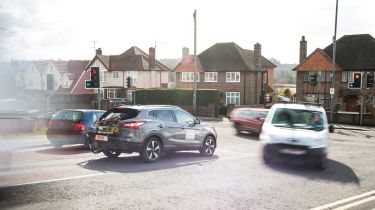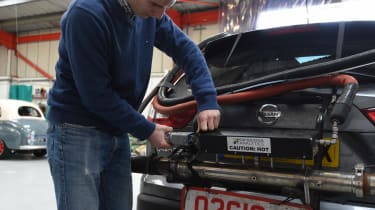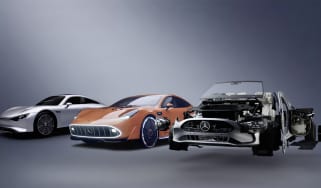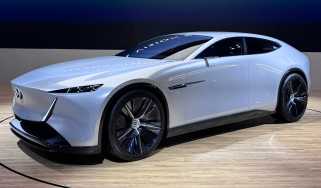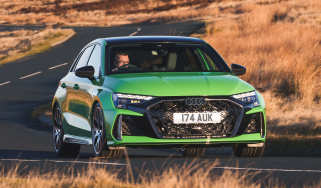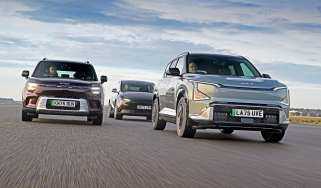Real-word mpg and emissions: how efficient and clean is your car really?
In 2018, WLTP and RDE tests measuring car MPG and emissions replaced the older, less accurate NEDC tests used before. The aim was to better reflect the fuel economy owners would get in the real world.
The systems for testing a car’s fuel economy and emissions and regularly under scrutiny. Back in 2018, the inaccurate and outdated New European Driving Cycle (NEDC) regulations were replaced by stricter, tougher and more realistic ways of testing a vehicle for fuel economy, carbon dioxide (CO2) and nitrogen oxide (NOx) production. The tests, that are still being done today, are known as the World Harmonised Light Vehicle Testing Protocol (WLTP) and Real Driving Emissions (RDE) regulations and they were designed to offer drivers more transparency regarding the overall efficiency of a vehicle while they are driving it. The question is, how accurate are the tests and how efficient is your car in the real world?
The NEDC regulations were originally designed in the 1980s and were often criticised as official figures were significantly better than those achieved by motorists during everyday driving conditions. NEDC testing lasted just 20 minutes and a total of 11km (6.8 miles) with strict speed, gear and ambient temperature controls. WLTP testers now analyse a car for 30 minutes, covering over twice the distance during the test to get an official economy figure. The average speed of the test has also risen to 29mph (from 21mph), with a maximum of 81mph attained (up from 75mph). As a result, stricter WLTP regulations have narrowed the gap between official figures produced during testing and those seen by drivers out on the road.
Aside from longer test cycles and variable gearchanges, the WLTP checks require each car to be tested with its optional equipment; the base spec car is no longer taken to be representative of the whole range. The WLTP test is also supported by a real-world driving element to measure Nitrogen Oxide (NOx) emissions – the Real Driving Emissions (RDE) test.
All new cars on sale now have their fuel economy and CO2 emissions tested via WLTP and their NOx emissions via RDE1. Cars newly brought to market from January 2020 will have to meet the stricter RDE2 regulations on NOx emissions - these will then come into effect for all new cars on sale, including those originally brought to market before January 2020, in January 2021.
What is RDE?
Introduced at the same time as WLTP regulations, the Real Driving Emissions (RDE) test is an emissions test which sits alongside the WLTP laboratory test. The purpose of the RDE test is to ensure that cars do not exceed emission limits in a range of different driving conditions. Overall, the test lasts between 90 and 120 minutes and combines urban, rural and motorway environments and must be at least 48km (29.82 miles) in length.
Portable Emission Measurement Systems (PEMS) are fitted to a car and calibrated to collect data in real time. PEMS equipment integrates gas analysers, exhaust flow metres and GPS to collect data to ensure that the legislative caps for pollutants are not exceeded at any point throughout the journey. Data collected is then analysed and the car will be given a simple ‘Pass’ or ‘Fail’, depending on if it stays under or goes over the emissions limit.
How efficient and clean is my car?
If you purchased a brand-new car at any point after September 2018, your car would have been tested under WLTP and RDE regulations.
On paper, cars analysed under WLTP and RDE testing regulations have a worse fuel efficiency than those tested under the old NEDC regulations, despite the fact motorists would rarely achieve NEDC official figures. WLTP and RDE tests are stricter, more accurate and most importantly, closer to the figures likely seen by drivers in the real world but they aren’t perfect.
Despite WLTP and RDE tests producing more accurate figures, a 2024 study from the European Commission found that most cars are, on average, 20 per cent less fuel efficient and produce more emissions than official WLTP figures suggest. Over 600,000 cars were sampled as part of this study, with petrol, diesel, hybrid and electric cars falling short of their official figures.
The Commission’s report said further steps need to be taken to ensure WLTP tests are more representative of everyday driving conditions, taking into account weather, air conditioning usage and a wider range of road types.
As a result, WLTP tests are being revised, with plug-in hybrid cars having more real-world data implemented into the testing from 2025. Further tweaks to help increase laboratory figure accuracy will also be introduced in the coming years.
Are WLTP and RDE fair?
Although WLTP and RDE produce much more realistic results for fuel economy and emissions, meaning drivers are more likely to be able to achieve their car’s stated MPG, the new systems haven’t escaped without criticism.
The AIR (Allow Independent Road-testing) Index is an independent emissions rating system which offers a simple red, amber and green ranking system for cars based on their NOx emissions, along with a grade ranging from A to E.
The scientists behind AIR believe there’s an inherent problem with WLTP and RDE, which is allowing the car industry to continue regulating its own fuel economy and emissions figures. They argue these should be tested and graded independently.
One such scientist is Dan Carder, director of the Centre for Alternative Fuels, Engines and Emissions at West Virginia University. He led a team that published some of the earliest evidence of the Volkswagen Dieselgate emissions scandal.
When AIR launched in February 2019, Carder said: “If the AIR Index had been implemented 15 years ago, Dieselgate would likely not have happened.
“Until the recent implementation of the AIR Index, the air quality debate was devoid of objective, independent, and publicly available assessment of vehicles’ actual NOx emissions during real driving in urban environments.”
WLTP and RDE vs NEDC: Car MPG and emissions tests compared
| NEDC | WLTP | RDE | |
| Location | Laboratory | Laboratory | On the road |
| Cycle length | 20 minutes | 30 minutes | Between 90 minutes and 2 hours |
| Route length | 11.03km (6.85 miles) | 23.27km (14.45 miles) | At least 48km (29.82 miles) |
| Share of test spent accelerating/decelerating | 36% | 84% | N/A |
| Share of test spent at constant cruising | 40% | 4% | N/A |
| Share of test spent idle | 24% | 13% | N/A |
| Average speed | 33.6kph (20.87mph) | 46.5kph (28.89mph) | Urban (15-40kph/9-24mph) Rural (60-90kph/37.28-55.92mph) Motorway (>90kph/55.92mph) |
| Maximum speed | 120kph (74.56mph) | 131.3kph (81.58mph) | Motorway driving has to have at least 5 mins at >100kph (62.13mph) |
| Gearshifts | Fixed gear positions | Vehicle-specific gear positions | Varies |
What do you think about the real-world car emissions testing issue? Let us know in the comments...
Get the latest electric car news, reviews and analysis on DrivingElectric.com

